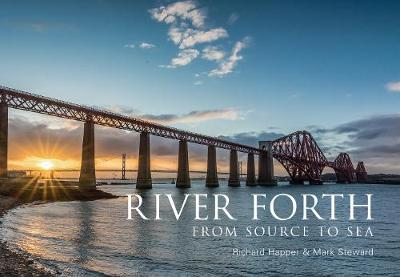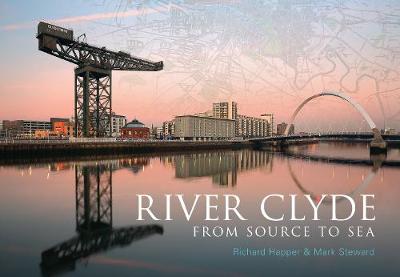River
2 total works
The Forth packs more interesting historical and geographical attractions into its relatively short length than any other river in Britain. It rises on the eastern slopes of the mighty Ben Lomond, the most southerly of Scotland’s Munros. It then ambles through the beautiful Trossachs, an area of scenic lochs and forests nestling amid crumpled hills which was the setting for Sir Walter Scott’s epic poem The Lady of the Lake. At Stirling the river enters the pages of British history: it was here that William Wallace’s army defeated England’s forces in 1297. Just seventeen years later, the decisive Battle of Bannockburn took place nearby, an event that helped earn Scotland its independence. The modern-day visitor centre brings the still-extant battle site to bloody life. Stirling Castle itself is the largest in Scotland and one of the country’s most historic. It guards what was for centuries the furthest downstream crossing of the river and was a vital nexus between highland and lowland, east and west. Several Scottish kings and queens were crowned here. After Stirling the River Forth becomes the Firth of Forth – the most substantial estuary on the east coast of Scotland.
This book will explore the history, culture and geography of one of Scotland’s most important waterways, from its source down to the Forth Bridges and on to where it joins the sea past Edinburgh, the nation’s capital city.
This book will explore the history, culture and geography of one of Scotland’s most important waterways, from its source down to the Forth Bridges and on to where it joins the sea past Edinburgh, the nation’s capital city.
The Clyde is a river of global importance - it was once the world's pre-eminent ship-building centre and a major trade hub for the British Empire. This book will explore the history, culture and geography of the river, from its source, in the remote southern uplands, to the city of Glasgow via Scotland's industrial heartland, and on to where it meets the sea in the beautiful Firth of Clyde.
The Clyde rises in a relatively unknown, but ruggedly beautiful, part of the southern uplands. It meanders through moor and picturesque farmland that belies a very active mining past. Our journey takes us past the Falls of Clyde - a spectacular beauty spot and now a UNESCO World Heritage site - and past the mausoleum of Hamilton Palace, one of the grandest country houses ever built in Britain.
Then the river reaches Glasgow itself. Beautiful river bridges, stations and riverfront buildings tell the story of the 'Second City of the Empire'. Over 25,000 ships have been built on the Clyde, including famous oceangoing liners such as the Queen Mary. Today the shipyards specialise in the construction of technologically advanced warships. The Clyde's trade in tobacco and sugar generated wealth that built the elegant streets of Glasgow. The river also runs right past two of the Commonwealth Games venues.
The beautiful Firth of Clyde is home to many points of interest including islands, Second World War torpedo ranges, nuclear submarine bases and beautiful mountains.
The Clyde rises in a relatively unknown, but ruggedly beautiful, part of the southern uplands. It meanders through moor and picturesque farmland that belies a very active mining past. Our journey takes us past the Falls of Clyde - a spectacular beauty spot and now a UNESCO World Heritage site - and past the mausoleum of Hamilton Palace, one of the grandest country houses ever built in Britain.
Then the river reaches Glasgow itself. Beautiful river bridges, stations and riverfront buildings tell the story of the 'Second City of the Empire'. Over 25,000 ships have been built on the Clyde, including famous oceangoing liners such as the Queen Mary. Today the shipyards specialise in the construction of technologically advanced warships. The Clyde's trade in tobacco and sugar generated wealth that built the elegant streets of Glasgow. The river also runs right past two of the Commonwealth Games venues.
The beautiful Firth of Clyde is home to many points of interest including islands, Second World War torpedo ranges, nuclear submarine bases and beautiful mountains.

